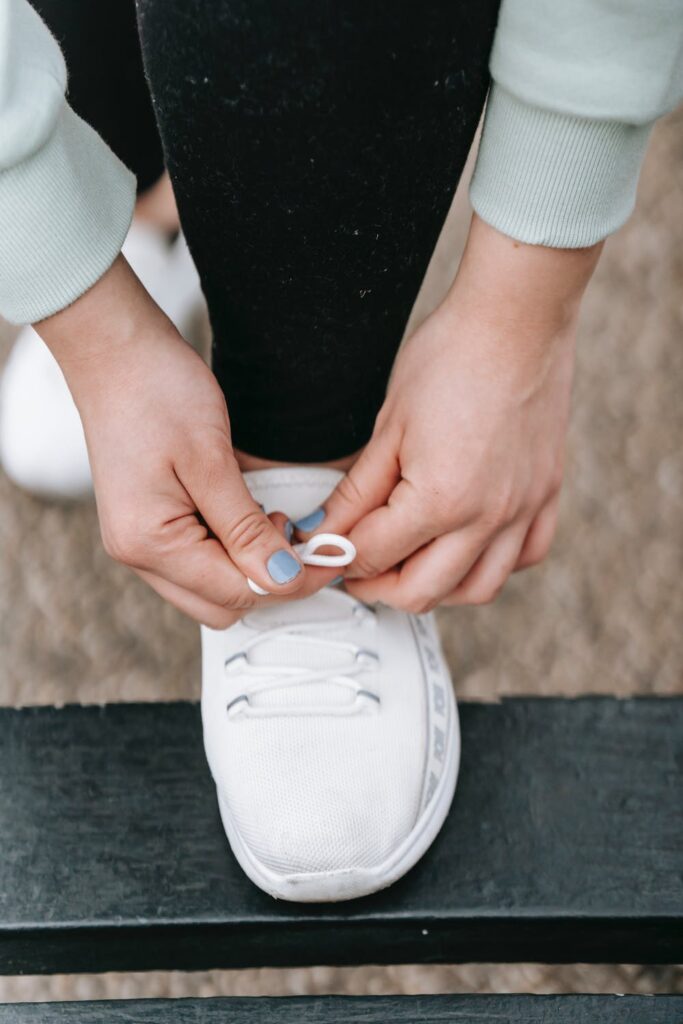
We’ve talked about fitness before, and why it’s so important. This past weekend, I was reminded of another aspect that many of us overlook, especially when we live what we perceive as “regular” lives.
I spent a couple days with Brandon Powers in his Peak Performance class out of Fireline Training Center (and hosted by FireRidge Defense). It’s nominally a shooting class, but it’s really about how to move efficiently and powerfully, and by the way you might have a gun in your hand at the same time. We did it in the context of competitive shooting, which has a significant element of running with guns (mom said no scissors, so this is fine, right?), and it’s all about doing it as fast as you can while still making accurate shots. There’s quite a bit to recommend about the class for that, but two concepts Brandon mentioned stuck with me far more, and they’re applicable to all of us, even if the action shooting sports aren’t our thing and even if carrying or shooting guns aren’t our thing.
To paraphrase: learning to move well, like an athlete, is how we prevent injury in all aspects of our lives. And moving as well and as much as we can today is how we can continue moving for longer in life.
It’s easy to think of athletic training as only for people who chase and earn fame and fortune for their participation. You might be more inclined to consider it if you are a very serious and competitive amateur but even then, you may focus purely on sport-specific skills and practice. Most of us are, at best, hobbyists in some sort of physical activity or game…if our idea of fitness isn’t fitting this delicious junk food into our mouths. We might play a Thanksgiving football game, decide to run the odd 5K, participate in the work softball league, maybe just chase after the kids. Getting strength and conditioning training, or movement coaching, doesn’t seem necessary. Besides, don’t we all know how we’re supposed to walk, run, and otherwise make our bodies go? Isn’t living with a bit of pain, some inability to do what we remember once being able to do, normal as we age?
Turns out we’re not entirely right when we think that way.
Making our bodies move optimally, instead of how we learned or how we trained ourselves because of injuries, requires knowledge of human anatomy and physiology. We can figure out what seems to hurt the least today, but it’s very likely we aren’t right and we may be doing further damage to ourselves unknowingly. More, we don’t necessarily know how best to move to keep something from starting to hurt. For instance, one of the topics we covered this weekend was how to properly place our feet to go around a sharp corner quickly. Can you think of when you might have to do that in normal, everyday life? Because I sure can. Even if not at a dead run, turning corners with purpose and urgency is something we do all the time, sometimes not even intentionally. Knowing which foot to put down where and how in order to prevent tweaking a knee or ankle sure seems like a good idea to me, especially if I can practice it enough to not have to think about it. It’s not much different than knowing how to pick up a heavy object without hurting your back. Proper movement patterns aren’t always natural and obvious, and it’s worthwhile to get expert guidance, from the folks who are concerned with the best way to do so, so that we can reduce wear and tear on our bodies.
We are also often tempted to protect ourselves from pain by resting the afflicted parts of our bodies. The very idea of moving can be scary, because we don’t want to make an injury worse. The issue is that it becomes a self-perpetuating problem. Worse, telling ourselves that we are too hurt to be active is a self-fulfilling prophecy. While it’s important not to make an acute injury worse, muscle soreness is not an injury and once the initial hurt of an actual injury is over, increasing levels of exercise are necessary to become fully healed. Unlike drinking and hangovers, hair of the dog is exactly what you need, and then some. We all discovered this during class when the short active warm-up with light stretches and minimal moving around we did on the first morning greased the way for creaky, old hips, knees, and ankles to work through our learning drills. Many of us were also pleasantly surprised when the same warm-up on the second morning were all that we needed to reduce pain and increase mobility after working a little too hard on day one. I know many of my classmates immediately committed to using those warm-up moves on a regular basis, just to get our regular days as regular people started. Starting with gentle movement when we’re hurting is, of course, the wise move. So is getting advice about how to rehab injuries or recover from overuse so we aren’t doomed to less and less ability to move as we age. The best advice, in my experience? Given by those who work to get athletes back to competitive form.
Learning to move like an athlete isn’t just for, well, athletes. All of us can benefit from learning and re-learning how to move efficiently and in ways that keep us from hurting ourselves. All of us can enjoy lives with less pain, by doing the work today to increase our mobility tomorrow. Think of it as learning to defend your body against itself, by learning from experts in how bodies work.




